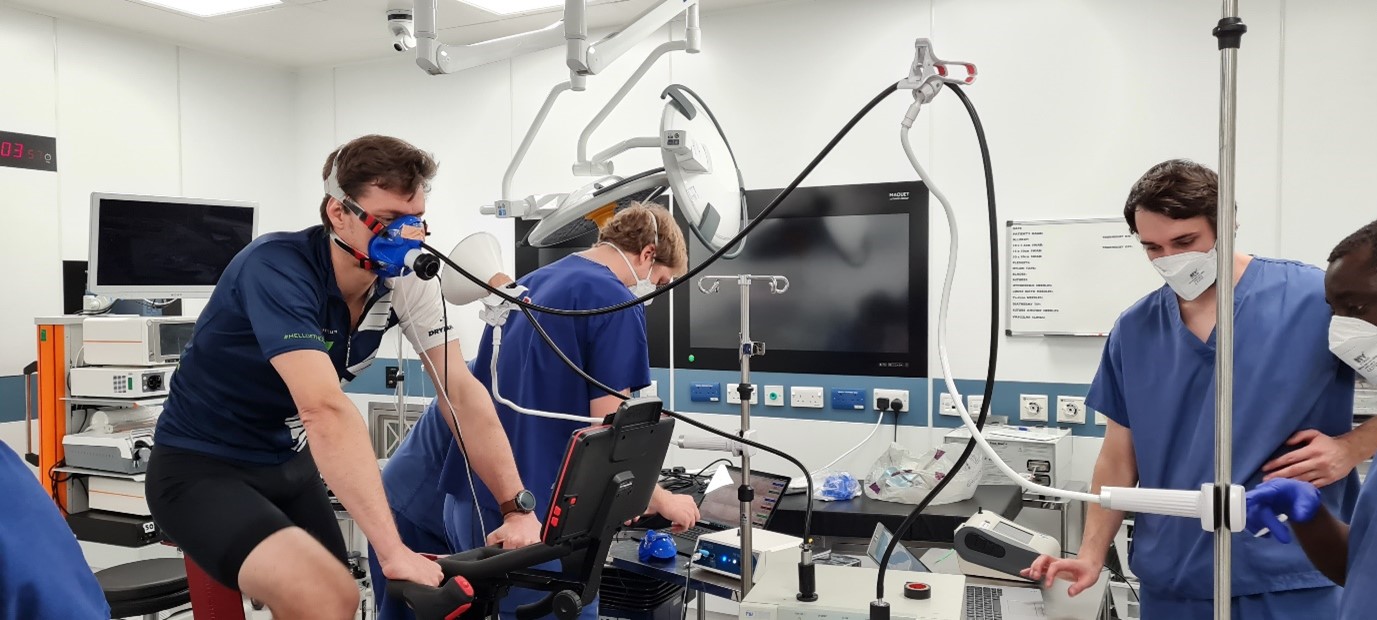Impact
Instrumentation from the Bristol Aerosols and Colloids Instrument Centre was central to several high-impact activities at the University of Bristol.
Sustainable falling snow
Snow Business, located in Stroud, Gloucestershire, is the world’s largest supplier of artificial snow for television, films, stage and events. Several years ago, they needed a radically new snow product that was non-toxic and left no harmful residues. They teamed up with the Briscoe group at the University of Bristol, using their expertise in Soft Matter, to develop new eco-friendly artificial snow products.
These world-leading products have now been used in over 1,200 events since 2017, including dozens of blockbuster Hollywood films, major festivals, shows, and TV programmes. The Briscoe Group used the Dynamic Foam Analyser to evaluate the stability of the eco-friendly foam, which informed their rational design for the formulations.
Altering UK Government guidance during the COVID-19 pandemic
During the COVID-19 pandemic, University of Bristol researchers measured the concentrations and size distributions of respiratory aerosols generated by performing artists and athletes during breathing, speaking, singing, playing musical instruments, and exercising. The results demonstrated, among other things, that speaking and singing generate similar amounts of aerosol at the same loudness. The results led directly to changes in UK Government guidance in the performing arts in August 2020. Aerodynamic and optical particle sizers were key BACIC instrumentation that facilitated this study.
Heads or tails: X-Rays get a grip on why Erucamide slips
The Diamond Light Source has highlighted a research collaboration between the University of Bristol and Procter & Gamble that offers insights into the surface nanostructure of a slippery industrial additive widespread in industrial applications. Slip additives have a wide range of industrial uses, finding their way into everything from lubricants to healthcare products. Fatty acid amides have been used as slip additives since the 1960s, and erucamide is widely used in polymer manufacturing. However, questions remain regarding the nanostructure of organised erucamide surface layers, including the molecular orientation of the outermost erucamide layer.
In work recently published in the Journal of Colloid and Interface Science, PhD student Dajana Gubała in Dr Wuge Briscoe’s group, working with a team from the Diamond Light Source, Procter & Gamble, and Bristol Chemistry, used a combination of techniques including contact angle measurement (with the Droplet Shape Analyzer in BACIC) and synchrotron X-ray reflectivity (XRR) to perform a quantitative characterisation of the structural parameters (e.g. wettability, molecular packing and thickness).
The results show that the surface nanostructures change with erucamide concentration and are consistent with the hydrophobic tails of the erucamide molecules pointed outwards. Such a fundamental understanding of these surface properties will be invaluable in tuning slip additive properties across a wide range of applications.
Communicating about respiratory aerosols through the Royal Institution Christmas Lecture
The 2021 Royal Institution Christmas Lecture led by Professor Sir Jonathan Van Tam explored how COVID-19 changed science. As part of the Christmas Lecture, a demonstration of respiratory aerosol generation was performed using an Aerodynamic Particle Sizer from BACIC. The Christmas Lectures are the world’s leading science lectures for young people and are watched by millions of people every year.
Aerosols and the Black Death
Professor Jonathan Reid was interviewed for a documentary about how the Black Death may have been spread by aerosols. An Aerodynamic Particle Sizer was key to the visual demonstration of respiratory aerosol generation in the broadcast.
Changes to the NHS Infection Control and Prevention Manual
BACIC instrumentation supported the AERATOR study, a collaboration between the University of Bristol and North Bristol NHS Trust that that quantified aerosol emitted during Aerosol Generating Procedures (AGPs). AGPs are medical procedures thought to generate aerosol that may enhance the risk of disease transmission and therefore require additional infection control steps to mitigate this risk. The results from AERATOR demonstrated that many AGPs do not generate aerosol. AERATOR’s results led to changes in the NHS England Infection Prevention and Control manual in 2022. Aerodynamic and optical particle sizers from BACIC were key instruments that enabled these studies.
Surface tensions of aerosols differ from those of bulk solutions
Aerosols serve as the seeds for atmospheric cloud droplets, and their surface tension plays an important role in determining whether ambient particles will ultimately grow into cloud droplets. However, the surface composition of aerosols is poorly understood. Bristol researchers measured directly the surface tensions of surfactant-containing droplets and compared these to macroscopic solution measurements made with the Krüss K100 tensiometer. The results demonstrated that the surface tensions of surfactant-containing droplets may not match those of the solutions from which they were generated, challenging key assumptions underlying climate models.
.png)

.jpg)